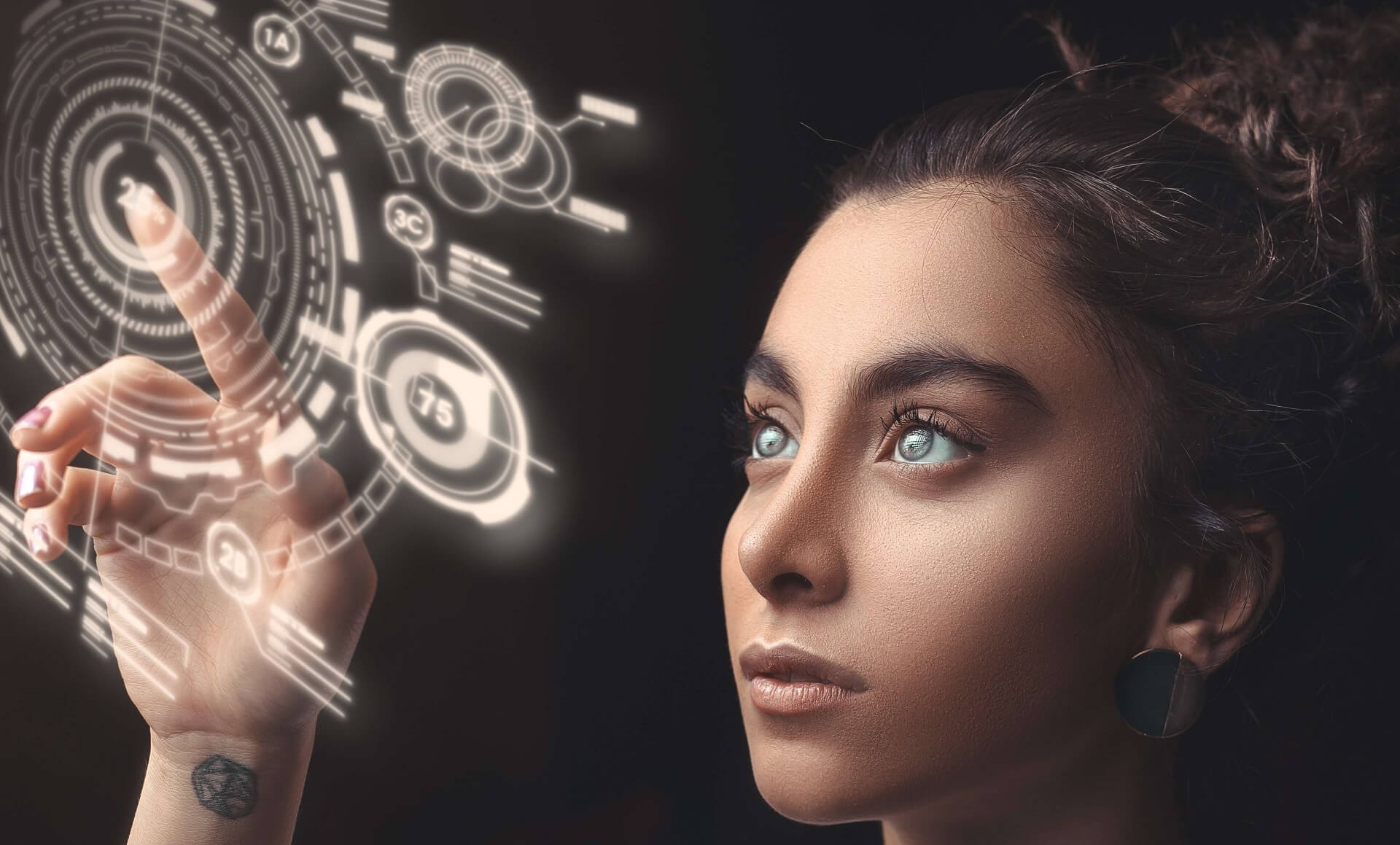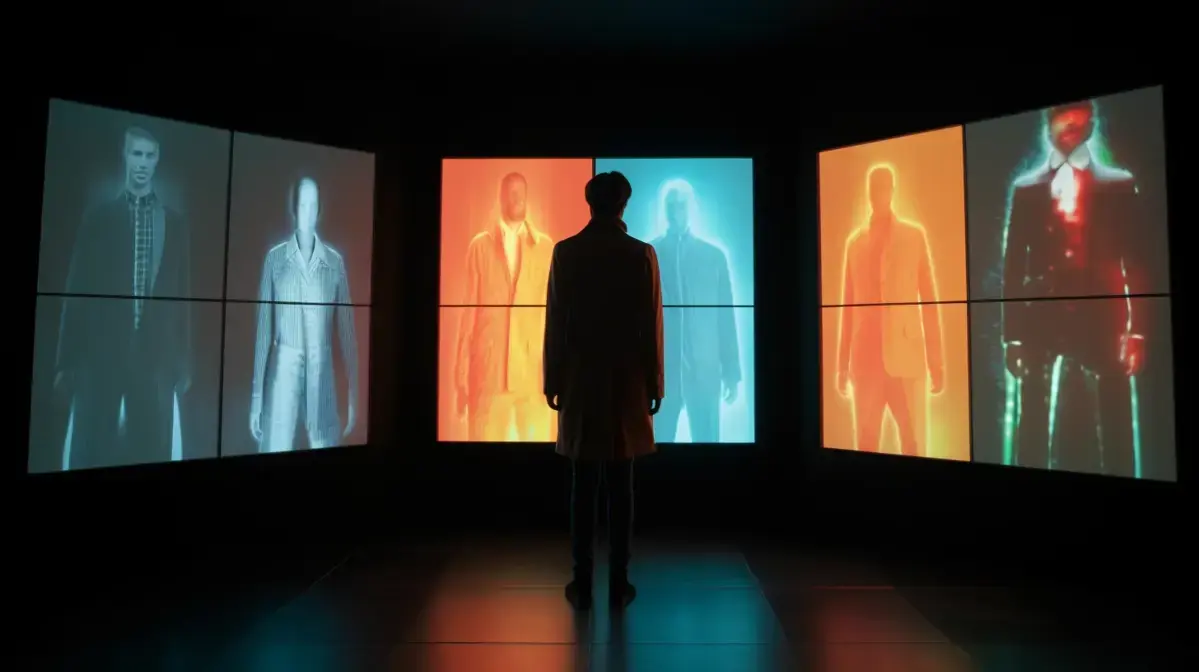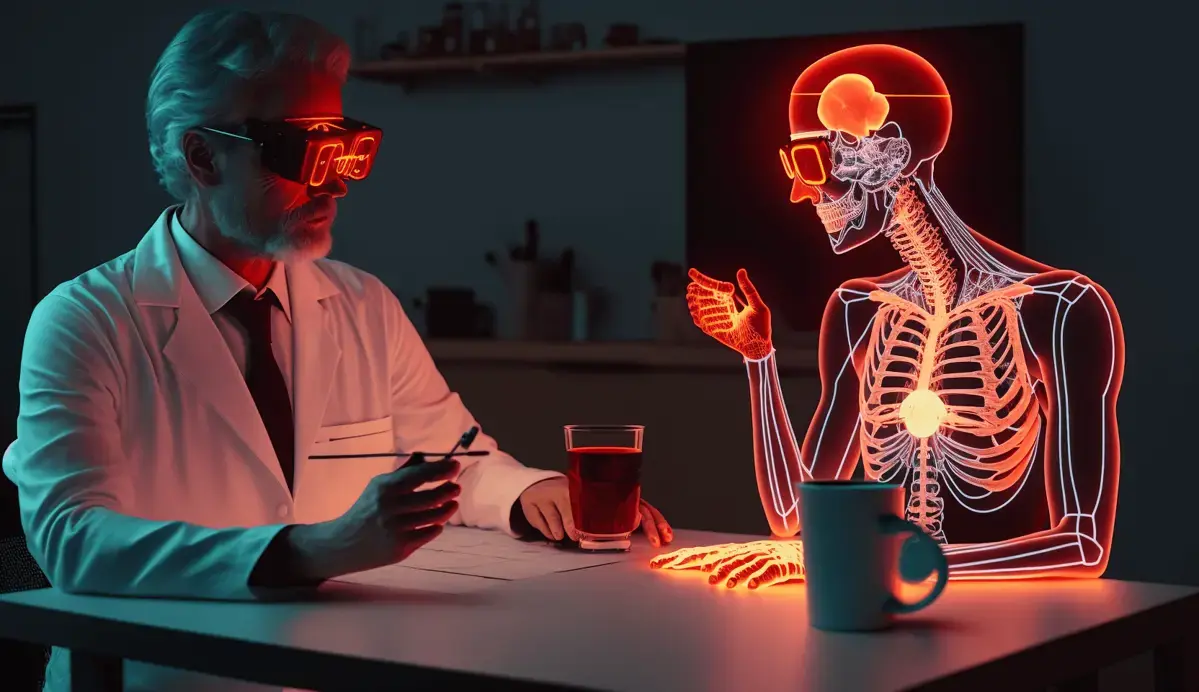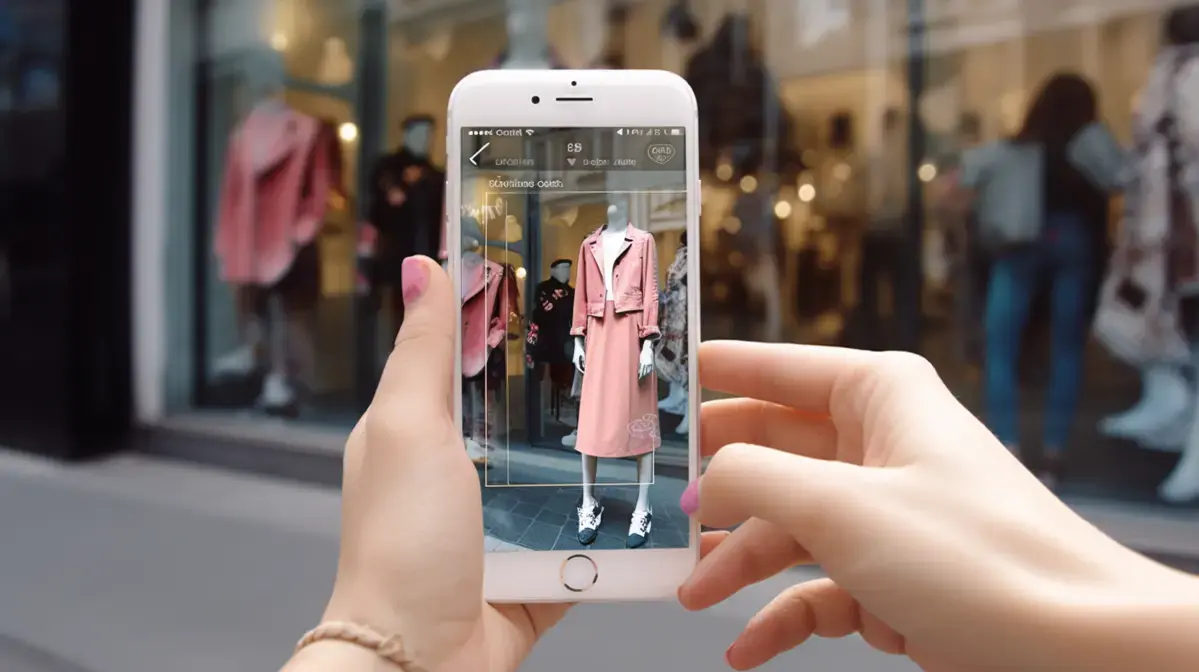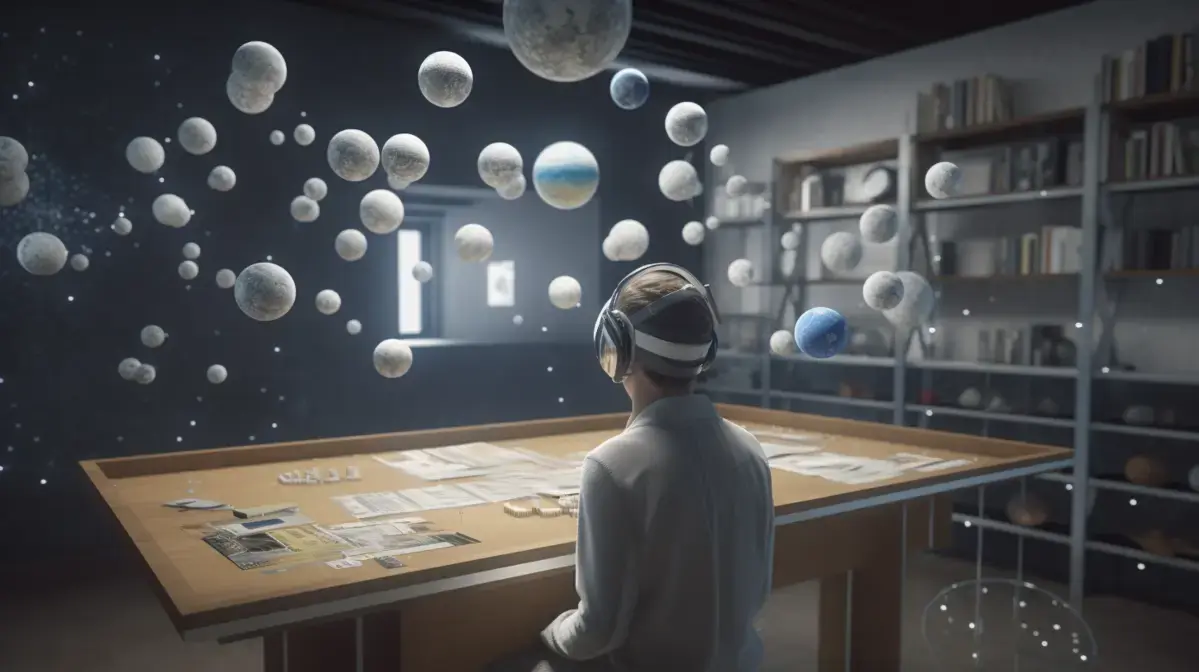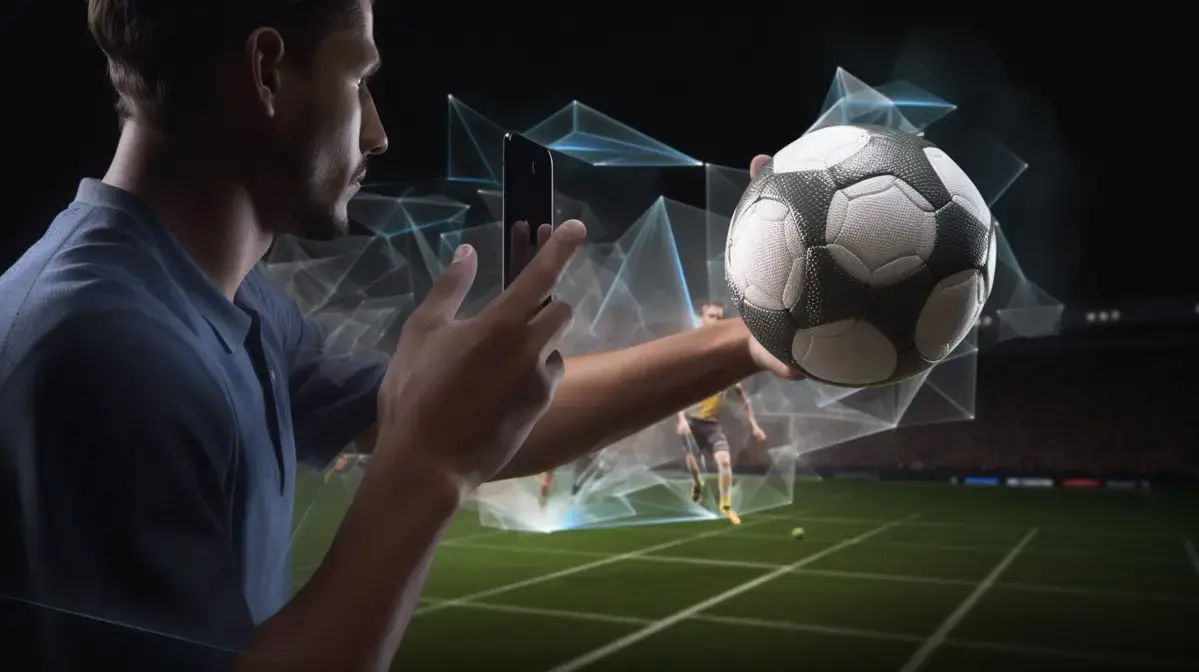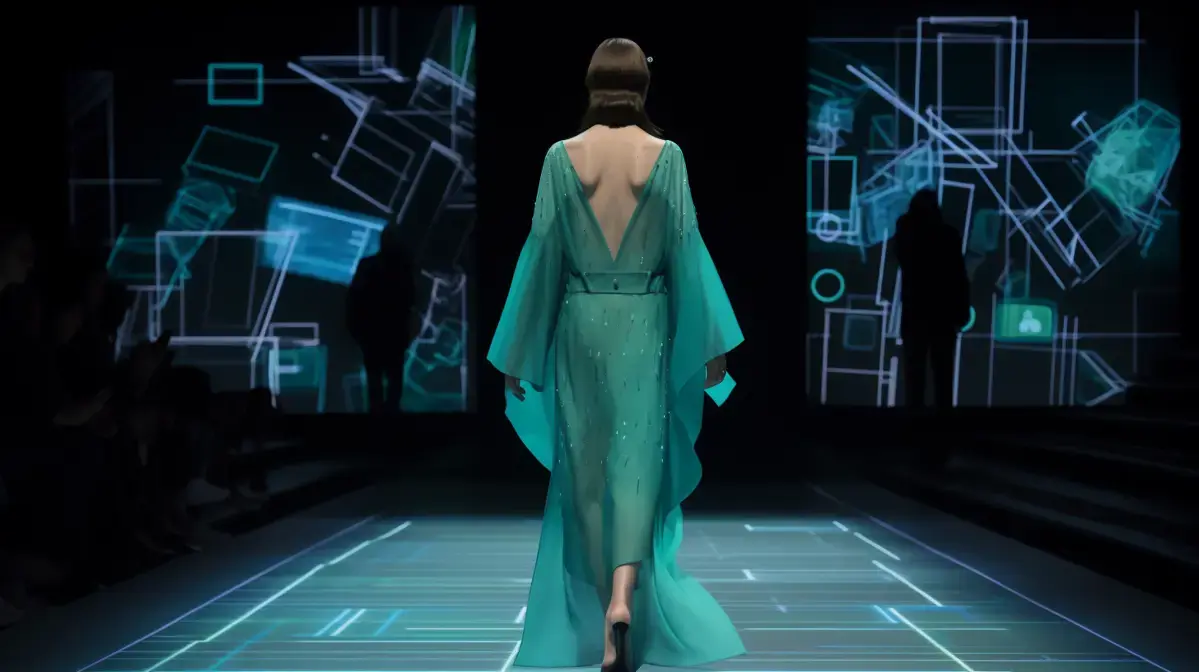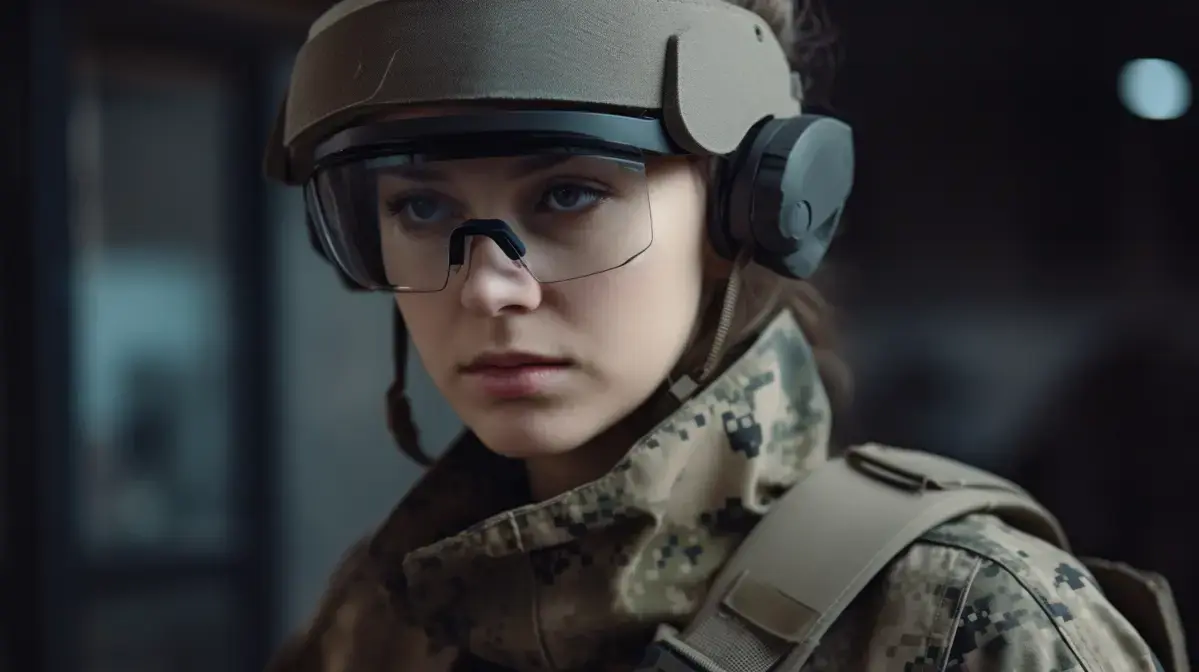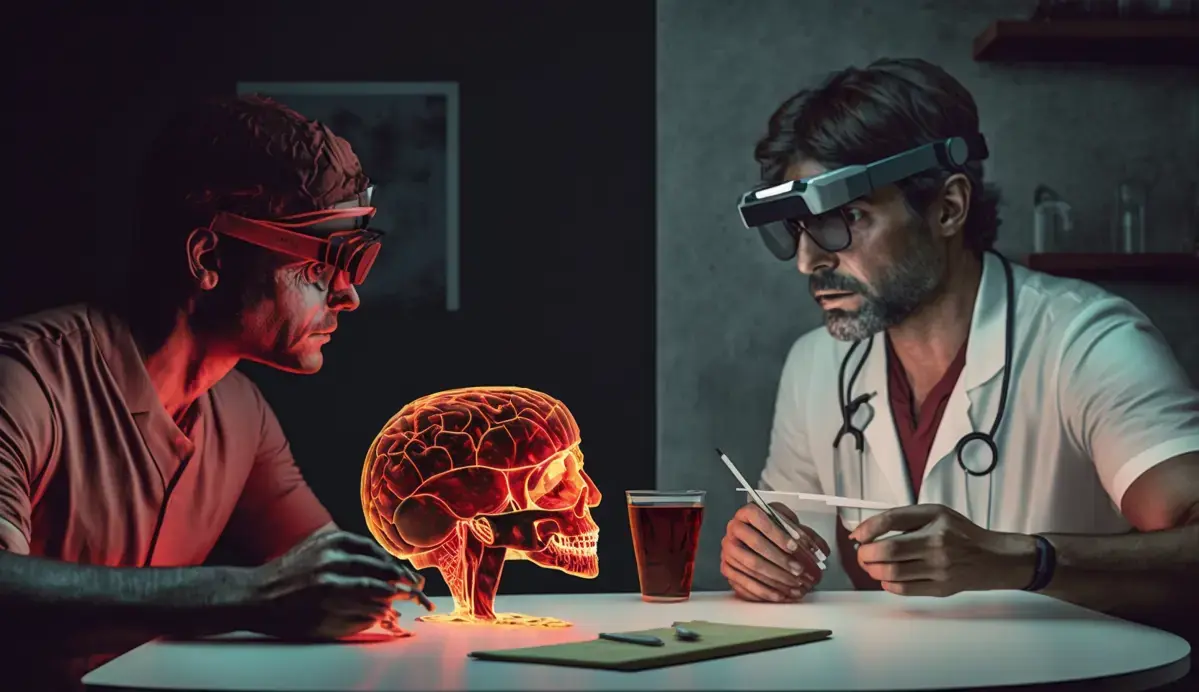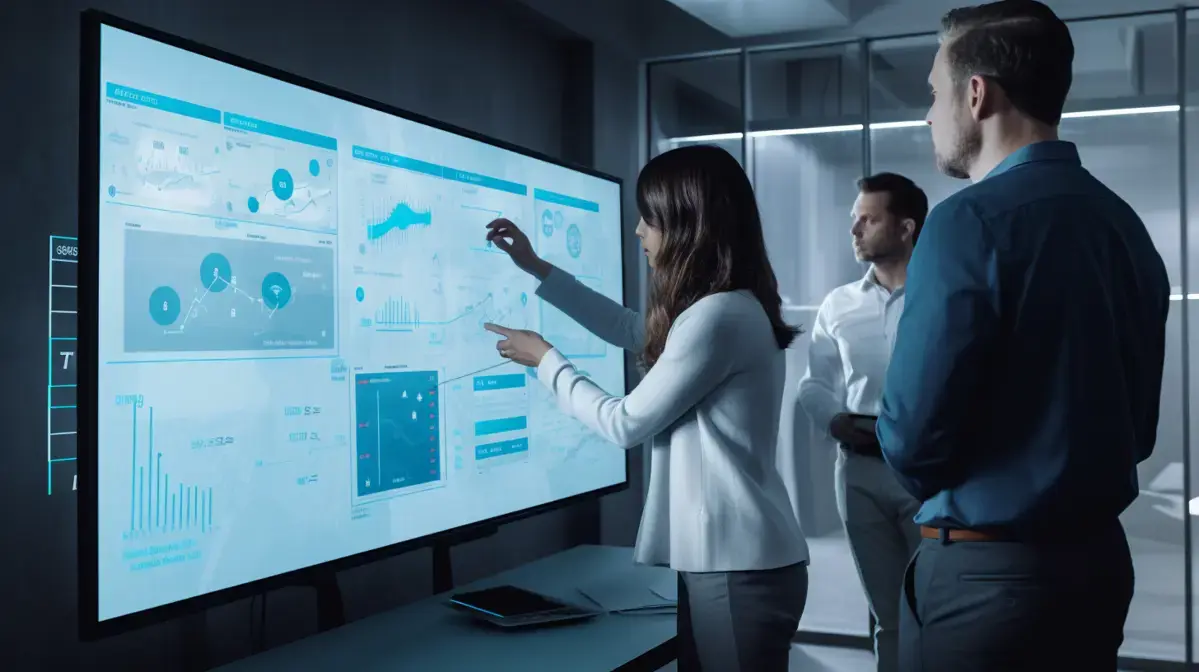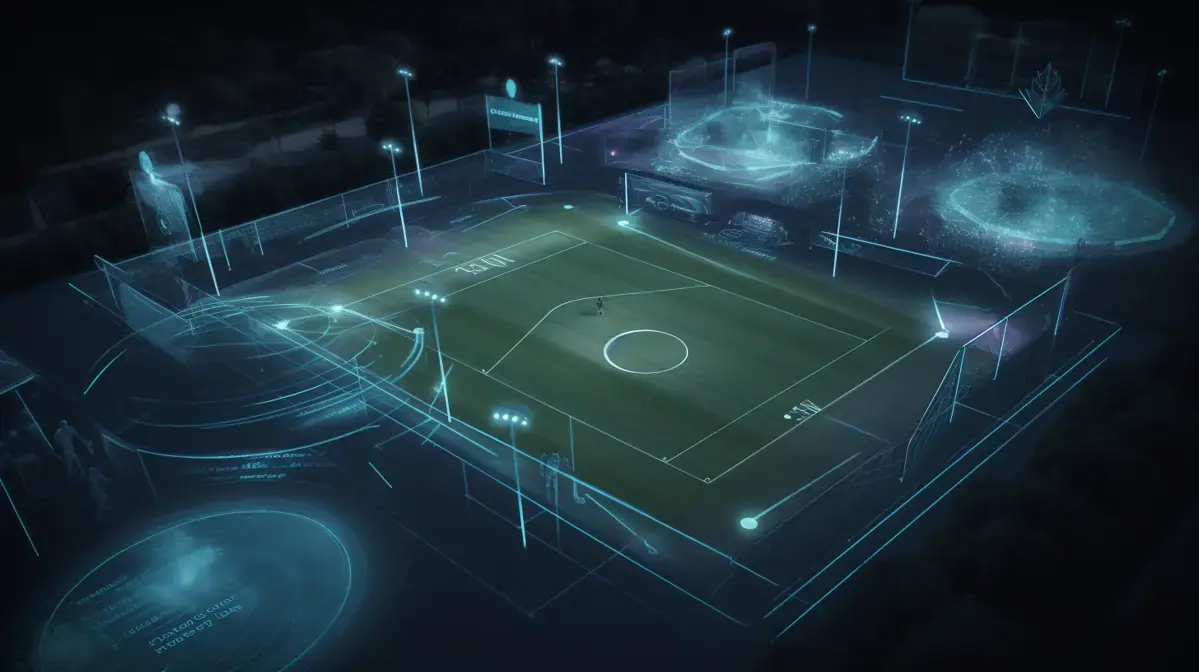Augmented reality (AR) technology has been gaining traction in various industries, offering new possibilities for businesses to improve their operations. However, as with any emerging technology, there are still limitations that need to be addressed.
One of the major performance features of AR is its ability to enhance visualization and provide immersive experiences. By overlaying virtual objects on top of the real world, AR can help workers better understand complex machinery or processes. This can lead to improved efficiency and fewer errors in manufacturing or assembly work.
Another benefit of AR is its potential for remote collaboration. With AR-enabled devices such as smart glasses or smartphones, workers in different locations can communicate more effectively by sharing visual information through a common platform.
However, current limitations include issues with accuracy and stability when tracking physical objects within an environment using sensors and cameras embedded into mobile devices like smartphones which could disrupt workflows if significant time is spent trying adjust these tools manually before using them properly . Also limited battery life could pose challenges during extended use sessions affecting productivity based tasks where these technologies are implemented
To learn more about augmented reality’s capabilities across industries visit argeopin.com/augmented-reality
Table Of Contents
- Key Points
- Introduction: Understanding Augmented Reality in Industry
- The Potential of Augmented Reality in the Industrial Sector
- Limitations of Augmented Reality Technology
- Interesting Facts
- Integration Issues with Existing Systems and Infrastructure
- High Cost of Implementation and Maintenance
- Technical Expertise Required for Development and Deployment
- FAQs
- Key Takeaways
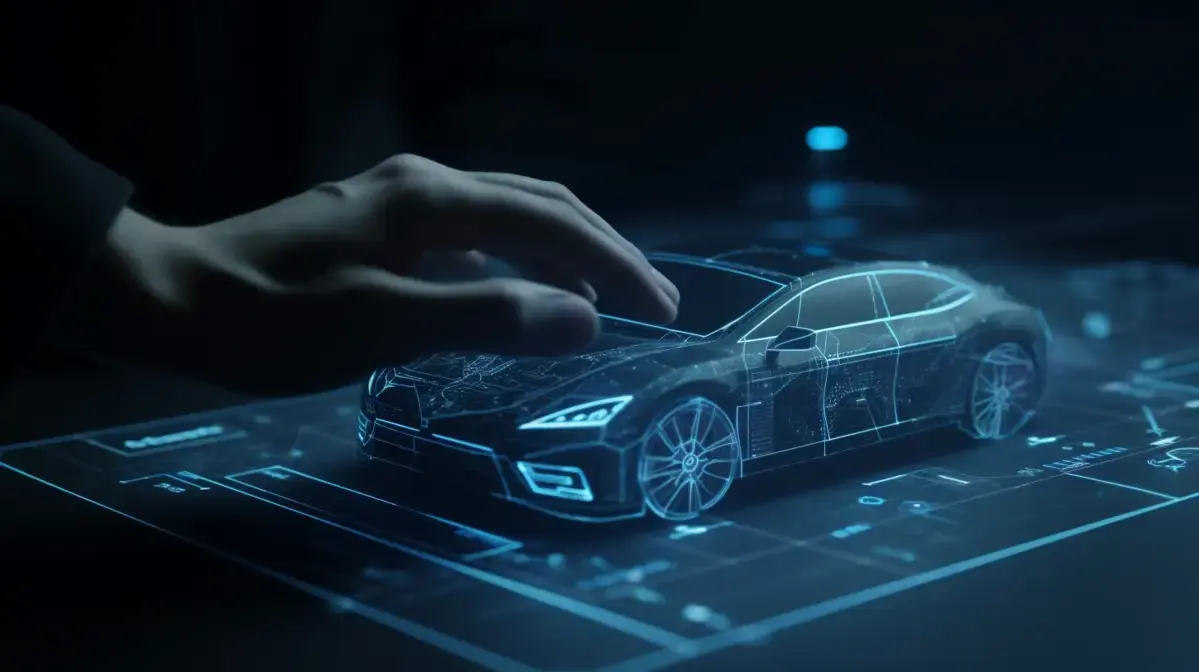
Key Points
- The accuracy and reliability of augmented reality technology are still limited.
- The cost of implementing augmented reality into industrial processes can be prohibitive for smaller businesses.
- There is a lack of clear regulations regarding the use of augmented reality in industry, particularly in regards to safety standards.
- Augmented reality requires significant training and skill development for employees to effectively utilize the technology, which may present challenges for some organizations.
Understanding Augmented Reality in Industry
Augmented Reality, or AR for short, is a technology that has certainly piqued the interest of many in recent years. Its ability to blend real-world environments with digital objects has opened up new possibilities across multiple sectors. From healthcare and education to gaming and entertainment, AR’s potential knows no bounds. However, despite its increasing popularity among consumers worldwide, there are still misconceptions about the technology that need addressing.
As an English-born expert in Augmented Reality software development for industry applications such as manufacturing and construction companies (insert keywords), it’s evident that using this cutting-edge innovation can be a game-changer for businesses – but only when implemented correctly.
Take manufacturing companies as an example: Using Augmented Reality during product assembly helps reduce errors while drastically improving efficiency levels by enabling workers to identify flaws within products before they leave the factory floor (insert anecdote). This results in significant cost savings on wasted materials and time spent reworking production lines repeatedly.
The application of augmented reality systems is far-reaching; we’ve just scratched the surface when it comes to what industries stand to gain from implementing this novel tech into their daily operations.
The Potential of Augmented Reality in the Industrial Sector
Augmented Reality (AR) technology has been around for decades, but only recently has it gained significant traction in various industries. The combination of virtual and real-life experiences creates an unparalleled opportunity to redefine how we interact with our environment. Augmented reality is a digital platform that overlays computer-generated imagery onto the user’s view of the physical world, providing an enhanced experience.
As someone who grew up fascinated by futuristic technologies, the advent of AR was a dream come true. Seeing tangible applications in various sectors like healthcare, construction and manufacturing enhanced this excitement even further. In healthcare, surgeons use AR headsets to overlay anatomical images on top of patients during surgery or visualize potential medical conditions before making incisions.
In manufacturing settings where time is money- AR systems have replaced traditional training practices that were often slow and laborious with high risk – requiring apprenticeships lasting several years – allowing trainees to learn faster while accelerating their entry into skilled workforces; adapting easily as well when new products are released or processes change.
The possibilities for augmented reality are endless which makes its integration into industry more appealing than ever.
Limitations of Augmented Reality Technology
Augmented Reality (AR) has taken the world by storm, and it’s no surprise why. This technology has revolutionized industries across the board, from healthcare to entertainment and beyond. At its core, AR creates a seamless blend between our physical reality and digital overlays that enhance our experience in ways we never thought possible.
As an English-born AR expert with years of experience under his belt, he can attest to the transformative power of this technology firsthand. Whether he’s working on a new project for a client or simply exploring all that augmented reality has to offer, every day brings something new and exciting.
One of his favourite things about working in this field is how it allows him to unleash his creativity in unprecedented ways. With so many possibilities at his fingertips – from 3D modeling software to graphic design tools – there are endless opportunities for experimentation and innovation.
For instance take marketing campaigns: with augmented reality now being used as part of content strategies marketers have been able provide valuable interactive experiences not previously available through traditional media channels
In conclusion . Just kidding. This is just the beginning when it comes Augmented Reality’s impact on industry – buckle up folks because you’re definitely going want front-row seats for what lies ahead.
Interesting Facts
- The term “augmented reality” was first coined in 1990 by researcher Tom Caudell. He used it to describe a technology that helped workers in the aircraft industry visualize complicated wire harnesses.
- One of the earliest uses of augmented reality technology was for training purposes, particularly for military and medical personnel. AR systems were designed to simulate real-life scenarios and help trainees learn how to react in different situations.
- Augmented reality has been used extensively in advertising campaigns, with major brands like Nike and Pepsi creating immersive experiences using AR apps on smartphones or tablets.
- In recent years, there has been an explosion of interest and investment around augmented reality thanks largely to advancements in mobile devices such as smartphones and tablets which are now powerful enough to support high-quality AR experiences.

Integration Issues with Existing Systems and Infrastructure
Augmented reality (AR) has been making waves in the tech world, and many industries have started to embrace it. AR is a technology that overlays digital objects onto the real world, offering users an enhanced experience. It can be used for a variety of purposes such as training and education, marketing and advertising or even entertainment.
As an Augmented Reality expert based in England, I have seen first-hand how this technology has revolutionized various industry sectors. One example is manufacturing; AR allows workers to see what they are building before actually constructing it which improves accuracy while reducing errors.
In another example from healthcare industry – patients with neurological disorders may struggle with balance issues due to their ailments worsening over time- but through utilizing dance therapy augmented by AR experiences designed specifically for them can help improve cognitive functions & motor skills- allowing patients greater independence than ever before.
With its flexibility across industries – The potential uses for this cutting-edge innovation are endless. From gaming enthusiasts looking forward to immersive gameplays using headsets like Oculus Quest 2 -to business owners wanting better customer engagement during presentations on products/services delivered through live demonstrations via smartphones or tablets equipped with Augmented Reality capabilities – there’s never been a more exciting time than now when exploring how best one might leverage augmented reality within their niche area of expertise.
High Cost of Implementation and Maintenance
Augmented Reality (AR) is a technology that has been making waves for some time now, greatly transforming the way people interact with their environment. For English-born AR expert, this technology holds particular interest because of its ability to revolutionize industry across multiple sectors such as manufacturing and healthcare.
As he shares his knowledge about AR in industry, he can’t help but get excited about the numerous possibilities it presents. He describes how industries can use AR to create immersive experiences by overlaying images on real-world objects while training employees or even collaborating remotely with other teams around the world.
He recalls an instance when using AR helped him streamline operations in a factory setup. With custom-built software supporting head-mounted devices (HMDs), workers had access to intelligent systems that could detect anomalies and suggest solutions during production runs through contextual cues displayed right before their eyes through HMDs lenses – This made troubleshooting of issues much more efficient than traditional techniques would have allowed.
The Augmented Reality evangelist notes that further advancements will likely lead towards even greater efficiency gains over time: “If factories continue adopting these technologies at scale globally then we’ll see unprecedented growth rates within certain areas like logistics where things are being moved from one place into another via autonomous augmented assistance — imagine robots running seamlessly alongside humans working together harmoniously.”
In conclusion, if you’re curious about how augmented reality may benefit your company’s business processes or add value to existing products/services offered across various vertical markets – it’s worth learning more.
Technical Expertise Required for Development and Deployment
As an Augmented Reality expert, the author understands the significance of this technology in today’s industrial world. The concept of AR is not new but has evolved over time to become more accessible to organizations across various sectors. With AR, businesses can now provide clients with exciting and interactive experiences that will help them make informed decisions.
AR offers an immersive experience that combines digital information with reality making it possible for people to interact seamlessly within their environment. For instance, a tour operator can use augmented reality headsets or mobile apps equipped with AR functionality to give a customer a virtual tour of different destinations worldwide before they decide on where they want to go for their next holiday.
In manufacturing plants and warehouses, technicians are using smart glasses enabled by augmented reality technology during installation processes or maintenance checks. Smart glasses allow workers real-time access to critical system information such as documentation guides without disrupting productivity levels significantly.
Overall, Augmented Reality provides endless possibilities across all industries globally; its applications range from education through entertainment and gaming into healthcare practices – bringing about innovation like never before seen in history.
FAQs
What is augmented reality and how does it work in industry?
Augmented reality (AR) is a technology that overlays digital information on the real world, using cameras, sensors and displays. In industry, AR can help workers visualize complex machinery or processes by superimposing virtual models onto real objects.
What are some limitations of using AR in industrial settings?
One limitation of AR in industry is its reliance on accurate tracking data. If the camera or sensor loses track of an object’s position, this can cause errors in the overlayed information. Additionally, if lighting conditions change frequently or are too low for accurate sensing equipment to pick up on visual cues this will also limit its functionality.
How can these limitations be addressed?
To address these issues with accuracy perception algorithms have been designed to improve tracking accuracy over time. Lighting must also be considered when setting up Augmented Reality systems so that ambient light doesn’t create false positives causing inaccurate results.Also usage scenarios need to be identified where the use case needs augmentation rather than traditional information delivery methods
In which industries has augmented reality been successfully implemented?
Several industries have already successfully implemented augmented reality technology including manufacturing , logistics & transport fields .In manufacturing Industry , workers use heads-up displays to see schematics overlaid onto actual machines while performing maintenance tasks.In Logistics Industry scanners attached to smart glasses allow employees quickly locate products within warehouses.The application possibilities increase as controllers like Leap Motion get better at capturing more gestures accurately allowing users more control over their experience.

Conclusion
Despite the rapid development and implementation of augmented reality in various industries, it is important to acknowledge its limitations. Some challenges include cost, training requirements, hardware limitations, privacy concerns and digital literacy issues among employees. However, with proper planning and understanding of these challenges can be addressed.
Augmented reality has immense potential to revolutionize various sectors by enhancing productivity levels while offering real-time data visualization tools that improve decision-making processes. As such businesses should continue exploring ways they can use augmented reality technology to their advantage.
In summary; although there are several obstacles that need overcoming before AR becomes ubiquitous in industry – from technical barriers through infrastructure impasses all the way down into political considerations about who will own this emerging market – augmented reality still presents as a key solution for many firms looking at ways they could improve both efficiency rates or customer engagement with minimal overheads attached.
Key Takeaways
-
- Augmented reality has limitations in certain industries due to cost, safety concerns and practicality.
- The use of AR technology can improve worker productivity and efficiency by providing real-time data visualization, remote guidance and training.
- The healthcare industry is one sector that could benefit greatly from the implementation of augmented reality technology for medical training, surgical procedures and patient care.
- AR can enhance customer experiences for retailers through virtual try-on applications or product visualizations.
- Balancing the costs versus benefits is essential when considering implementing AR solutions in industrial settings.
